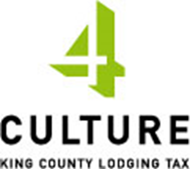Eastside Stories is our way of sharing Eastside history through the many events, people places and interesting bits of information that we collect at the Eastside Heritage Center. We hope you enjoy these stories and share them with friends and family.
Article by Barb Williams
From small beginnings, the Bellevue Fire Department has grown over time to become internationally recognized for its innovation and quality of service. Before Bellevue became an incorporated City (1953), it was part of unincorporated King County. Area residents were on their own to put out fires. However, as more people moved to the Eastside, there was a greater need for better fire protection. A group of volunteers provided an informal fire department that began in the 1920s. In 1941 a group of businessmen borrowed a fire truck from the county and parked it in the backyard of one of the volunteers. Calls for help came into the Medina switchboard operators, who relayed calls to the volunteers. “The first man at the truck rang the old school bell and wrote the address on the bulletin board. Men clambered on the truck. The fourth man operated the gauges and water pressure. They were off. More men raced after the truck in their cars and helped put out the fire.” (1) From this volunteer force, King County Fire District No.14 (KCFD 14) was created in Bellevue on July 27,1942 with the approval of Bellevue, Medina, Enatai and Wilburton residents. A meeting was held at Henry Schierman’s Barber Shop on August 25,1942. Ten charter firefighter members attended. They elected George W. Sheets, a dry cleaner owner, as Fire Chief. The calls came into his service, he sounded the alarm, gathered the firefighters and off they went. In 1946, the alarm was moved to Bill Crooker’s grocery store. The group rented a building for a fire station in Old Bellevue behind Eastside Glass and Paint Company. They installed an air raid siren purchased from the Lake Washington Shipyard and bought a 1935 fire truck with pump from the U.S. Forest Service. Their primary function was to put out fires such as the outside wall fire at the Minish residence caused by an overheated stove. Or Ruth M. Bancroft’s fire in 1947 that started at Killarney Circle when she was clearing and burning Scotch-Broom on her lot. “Never before or since have I been so glad to see men, Men, MEN!” She was speaking of the volunteer firefighters of the KCFD 14.
Photo (above): Bellevue Fire Department photo of (Left to Right) Bill Crooker, ?, Len Schaal, Frank Gass (Fire Chief)
Over the years, the volunteers were integrated with paid staff. In 1947, Frank Gass was elected to be the new Volunteer Fire Chief and later became the first paid member of the KCFD 14. By 1964 there were 14 full-time paid firefighters who worked Monday-Friday (8am-4pm) and 83 volunteer firefighters. (Volunteers were phased out in 1980.)
The KCFD 14 was growing and evolved into its own city unit when the Bellevue Fire Department (BFD) was formed at midnight on January 1, 1965. Captain Leo Wenner managed 14 firefighters. Jeanette Woldseth Washington State’s first career female firefighter in 1977 later became BFD’s first female fire captain. The department became known for its creativity; it developed innovative programs such as fire prevention, training, and the establishment of Medic 1(1972), Eastside Hazardous Materials Consortium (1984) and the “Light Force Company”(1994) in which an engine and a ladder truck work in tandem. In 1998 BFD received Accredited Agency status from the Commission on Fire Accreditation International becoming the eighth fire department in the world to receive this status. The increase in high-rise buildings required appropriate training and equipment. Medical emergencies out-numbered all others which prompted the department to have trained medics and equipment on many trucks. A City of Bellevue 2018 website report shows 78% of 20,000+ incidents were medical in nature. By 2019, the Bellevue Fire Department consisted of: 253 employees, including 9 chief officers, 167 firefighters - EMT, 37 firefighters - paramedics, 40 civilian employees, 9 fire stations and multiple vehicles. At this time the Bellevue Fire Department served the following communities; Bellevue, Medina, Clyde Hill, Beaux Arts, The Three Points communities, Newcastle, support to Mercer Island and medical units to Issaquah and North Bend.
Skillfully, members of the Bellevue Fire Department saved our home from burning in 1984. The Department deserves our respect, praise and thanks for their service to our Eastside communities over time.
Photo (above): This photo shows a crowd or citizens with fire fighters and fire truck. Taken May 1965 during and Open House celebrating the first Bellevue City Fire Department this was snapped on Main Street and shows Leo Wenner (Bellevue’s first Fire Chief in white hat) riding on the fire truck Segraves purchased in 1961.
Sources:
1) City of Bellevue website: Bellevue Fire Department 2019 Annual Report
2) Book: Bellevue Fire Department, 50th Anniversary 1965 - 2015
3) Pamphlet: 50 Years Bellevue Fire 1965 - 2015: A Guide to Our History 1942-2015
4) Article by Ruth M. Bancroft “Lack of fire protection ignites volunteer spirit”, Bellevue American, Thursday, March 11, 1976 page D2, footnote (1)
5) Article Eastside Heritage Corner, “The formative years of the Bellevue Fire Department”, Bellevue Reporter, April 8, 2016
6) Article by Allison Deangelis “Laurie Lamp becomes Bellevue Fire’s third female captain”, Bellevue Reporter, May 13, 2016
7) Article by David Wilma “Bellevue Emergency and Police Services”
8) Fire Report: Bellevue Volunteer Fire Department 12-3-50
9) Meeting Report: Charter Members of Bellevue Volunteer Fire Department August 25, 1942


































